LEVOBUNOLOL
- CAS NO.:47141-42-4
- Empirical Formula: C17H25NO3
- Molecular Weight: 291.39
- MDL number: MFCD00864586
- SAFETY DATA SHEET (SDS)
- Update Date: 2024-10-28 16:48:35
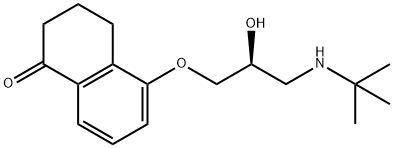
What is LEVOBUNOLOL?
Absorption
80%
Toxicity
Bradycardia, hypotension, bronchospasm, and acute cardiac failure, LD50=700 mg/kg (orally in rat).
Chemical properties
White Solid
Originator
Betagan,Allergan,India
The Uses of LEVOBUNOLOL
As a non-selective adrenoceptor antagonist, Levobunolol is used as an anticonvulsant.
The Uses of LEVOBUNOLOL
Levobunolol hydrochloride is an antiglaucoma agent in ophthalmie solutions.
Background
A nonselective beta-adrenoceptor antagonist used in the treatment of glaucoma.
Indications
For lowering intraocular pressure (IOP) and may be used in patients with chronic open-angle glaucoma or ocular hypertension.
Definition
ChEBI: A cyclic ketone that is 3,4-dihydronaphthalen-1-one substituted at position 5 by a 3-(tert-butylamino)-2-hydroxypropoxy group (the S-enantiomer). A non-selective beta-adrenergic antagonist used (as its hydrochlo ide salt) for treatment of glaucoma.
Manufacturing Process
9.62 g (59 mmoles) 5-hydroxy-3,4-dihydro-1(2H)-naphthalenone, 67 ml
toluene, 0.36 g (1.1 mmoles) tetra-n-butylammonium bromide, 4.51 g (68
mmoles) 85% potassium hydroxide and 20 ml (254 mmoles) (R)-(-)-
epichlorhydrine were placed in an appropriate flask fitted with efficient
mechanical stirring, and the mixture was heated under reflux for two hours.
The mixture was allowed to cool to 30°C, 50 ml toluene and 50 ml water were
added and the mixture was vigorously stirred. The organic phase was
removed and the aqueous phase extracted with 25 ml toluene. The combined
organic phases were concentrated at reduced pressure, 31 ml (300 mmoles)
tert-butylamine, 45 ml ethanol and 3 ml deionized water were added, and the
solution was heated under reflux for one hour. The mixture was allowed to
cool to 40°C and the volatile products were distilled at reduced pressure.
Toluene (9 ml) was added to the residue and volatiles were distilled at
reduced pressure. (S)-5-(2,3-Epoxypropoxy)-3,4-dihydro-1(2H)-
naphthalenone with an optical purity greater than 95% was obtained. Toluene
(75 ml) was added to the product, and then, 10 ml of 35% (w/v) hydrochloric
acid and 110 ml water, and the mixture was stirred for fifteen minutes. The
organic phase was decanted and the aqueous one was extracted with 50 ml
toluene. The aqueous phase was basified by addition of a solution of 5.1 g
sodium hydroxide in 150 ml water and extracted twice with toluene (100 and
50 ml, respectively). The combined organic extracts were dried with
anhydrous sodium sulfate, decolorized with active charcoal and filtered.
To the above toluenic solution containing levobunolol as free base, 16 ml
ethanol and the stoichiometric amount of hydrogen chloride were added. The
stirred mixture was cooled below 10°C and kept at this temperature for one
hour. The precipitated solid was filtered, washed with toluene, recrystallized
twice from 43 ml ethanol and dried to give 10.0 g (51% yield) of (-)-3,4-
dihydro-5-(3-(tert-butylamino)-2-hydroxypropoxy)-1(2H)-naphthalenone
hydrochloride (levobunolol hydrochloride) having a rotary power at 25°C
below -19°.
brand name
Akbeta(Akorn); Betagan(Allergan).
Therapeutic Function
Beta-adrenergic blocker
Pharmacokinetics
Levobunolol is an ophthalmic beta-blocker, equally effective at β(1)- and β(2)-receptor sites. Levobunolol reduces both elevated and normal IOP in patients with or without glaucoma. In patients with elevated IOP, levobunolol reduces mean IOP by approximately 25-40% from baseline. As the drug is a nonselective &beta-adrenergic blocking agent, it can produce both systemic pulmonary and cardiovascular effects following topical application to the eye. These effects include adverse pulmonary effects (eg. bronchoconstriction, increased airway resistance), and a decrease in blood pressure and heart rate.
Metabolism
Hepatic
Properties of LEVOBUNOLOL
| Melting point: | 209-211°C |
| storage temp. | -20°C Freezer, Under Inert Atmosphere |
| CAS DataBase Reference | 47141-42-4(CAS DataBase Reference) |
Safety information for LEVOBUNOLOL
Computed Descriptors for LEVOBUNOLOL
LEVOBUNOLOL manufacturer
Ralington Pharma
New Products
4-Fluorophenylacetic acid 4-Methylphenylacetic acid N-Boc-D-alaninol N-BOC-D/L-ALANINOL Tert-butyl bis(2-chloroethyl)carbamate 3-Morpholino-1-(4-nitrophenyl)-5,6-dihydropyridin- 2(1H)-one Furan-2,5-Dicarboxylic Acid Tropic acid S-2-CHLORO PROPIONIC ACID ETHYL ISOCYANOACETATE 2-Bromo-1,3-Bis(Dimethylamino)Trimethinium Hexafluorophosphate (6-METHYL-[1,3]DITHIOLO[4,5-b]QUINOXALIN-2-ONE INDAZOLE-3-CARBOXYLIC ACID 4-IODO BENZOIC ACID (2-Hydroxyphenyl)acetonitrile 4-Bromopyrazole 5,6-Dimethoxyindanone 2-(Cyanocyclohexyl)acetic acid 4-methoxy-3,5-dinitropyridine 2-aminopropyl benzoate hydrochloride 1-(4-(aminomethyl)benzyl)urea hydrochloride diethyl 2-(2-((tertbutoxycarbonyl)amino) ethyl)malonate tert-butyl 4- (ureidomethyl)benzylcarbamate Ethyl-2-chloro((4-methoxyphenyl)hydrazono)acetateRelated products of tetrahydrofuran
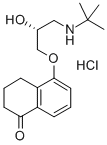
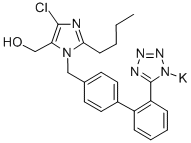

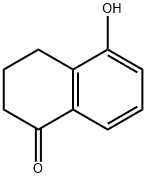

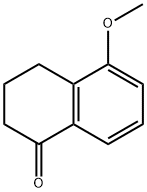


You may like
-
 47141-42-4 Levobunolol 98%View Details
47141-42-4 Levobunolol 98%View Details
47141-42-4 -
 Levobunolol hydrochloride CAS 47141-42-4View Details
Levobunolol hydrochloride CAS 47141-42-4View Details
47141-42-4 -
 1975-50-4 98%View Details
1975-50-4 98%View Details
1975-50-4 -
 2-HYDROXY BENZYL ALCOHOL 98%View Details
2-HYDROXY BENZYL ALCOHOL 98%View Details
90-01-7 -
 2-Chloro-1,3-Bis(Dimethylamino)Trimethinium Hexafluorophosphate 221615-75-4 98%View Details
2-Chloro-1,3-Bis(Dimethylamino)Trimethinium Hexafluorophosphate 221615-75-4 98%View Details
221615-75-4 -
 61397-56-6 CIS BROMO BENZOATE 98%View Details
61397-56-6 CIS BROMO BENZOATE 98%View Details
61397-56-6 -
 14714-50-2 (2-Hydroxyphenyl)acetonitrile 98+View Details
14714-50-2 (2-Hydroxyphenyl)acetonitrile 98+View Details
14714-50-2 -
 118753-70-1 98+View Details
118753-70-1 98+View Details
118753-70-1